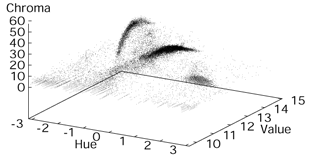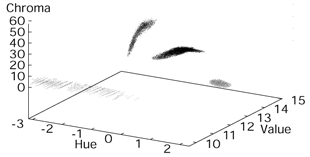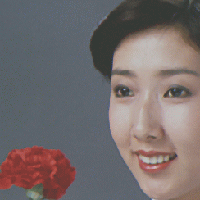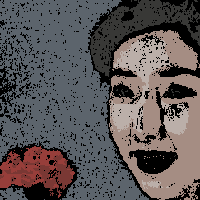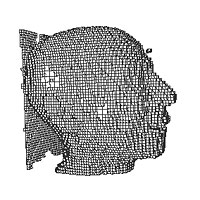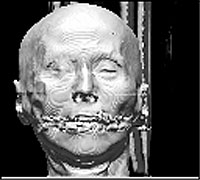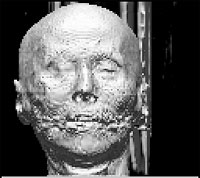![]() Robust Clustering Based on Finite
Mixture Model and Multivariate Trimming
Robust Clustering Based on Finite
Mixture Model and Multivariate Trimming
Clustering of feature vectors for image segmentation can be formulated as parameter estimation of finite mixture model. The EM algorithm is a method for parameter estimation. The membership of each data to clusters is regarded as "missing data" in the EM algorithm for finite mixture model. In convensional clutering, data should be assinged to cluster exhaustively; null membership is not allowed. Thus outliers that may be contained in data affects extraction of major clusters. I introduced multivariate trimming, a type of robust estimation, to the EM algorithm to extract major clusters properly. This method extracts only major cluster while rejecting outliers as shown in an example blow.
|
|
@@@@@@@@@@@@Data from color image@@@@@@@@@@@@Clustering result
![]() Region Segmentation Using Both
Feature and Image Space Based on Robust Clustering
Region Segmentation Using Both
Feature and Image Space Based on Robust Clustering
There are two types of techniques in the region segmentation: the segmentation in the feature space and in the image space. The typical examples are the clustering and the region growing. These two techniques have complementary properties that the former is suitable to segment the major portions in the image, while the latter is suitable to segment the detailed portions. A region segmentation method using both the feature space and the image space is proposed in the present research. The proposed method utilizes the complementary properties mentioned above to segment the image in accordance with the complexity of each portion. First, in the feature space, only the explicit clusters are extracted by a novel robust clustering to segment the major portions in the image. Second, in the image space, the small regions are merged into the major portions, and then the detailed portions separated from the major ones are segmented by the region growing. The experiments for the real images show that the each portion of the images are appropriately segmented by the proposed method. The following images are example of result. Since eyes, mouth and eyebrows were corresponding to the detailed portions in face, we could extract them using the robust clustering without apriori knowledge on skin color.
|
|
![]() Content-based
Coding of Volume Data
Content-based
Coding of Volume Data
A content-based coding method of volume data is proposed in this paper. The proposed method is based on ``texture-contour'' approach. First, volume data is segmented, then shape, texture and opacity information of contents are coded. Each processing is carried out using methods and the representations as follows: (i) segmentation: probability density function estimation using finite mixture model, (ii) shape: depth-first (DF) representation of octree, (iii) texture: shape-adaptive DCT (SA-DCT) and entropy coding, (iv) opacity: the parameters of finite mixture model. Using the content-based coding, one can obtain shape of object and opacity which are useful in visualization of decoded data. Experimental result for CT data is shown blow. Compression ratio was 1:7.3 with PSNR 35.9[dB].
|
|
@@@@@@@@@@@ Octree@@@@@@ Original data@ Compressed data
